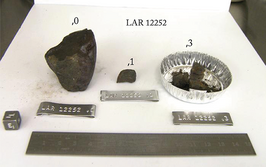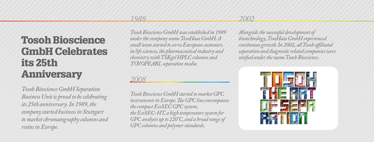Return of the TASIAs
Accurate measurement drives progress in science in immeasurable ways. Here, we celebrate a year’s worth of advances in The Analytical Scientist Innovation Awards 2014. What impact will these 15 TASIA winners have on your field?

1. iMScope TRIO
Optical microscope meets mass spectrometer in a unique tool
Produced by: Shimadzu (www.shimadzu.com)
Potential impact: The iMScope TRIO acquires images from an optical microscope and MS images from AP-MALDI, featuring the world’s highest spatial resolution of 5µm or less. As the only integrated system, it expands the potential research opportunities in a wide variety of fields, including pharmacokinetics analyses (distribution of drugs or their metabolites), toxicity testing, and monitoring the distribution of active ingredients in the food industry. High-speed analysis (6 pixels/sec) shortens experiment time dramatically.)
Not only limited to imaging, it is also capable of analyzing samples extracted and separated from tissues via connection with liquid chromatography.
Detail: Combining an optical microscope with a mass spectrometer, the iMScope TRIO is a unique instrument tailor-made for mass spectrometry imaging. Providing a revolutionary technology, it can be applied to cutting-edge R&D and identifies what users see at the molecular level by superimposing high-resolution morphological images with MSn images, which identifies and visualizes the distribution of specific molecules.
With the imaging MS solution software designed specifically for iMScope TRIO, optical and MSn images can be acquired. Additionally, the software allows data analysis by overlay of MS and optical images and provides various statistical data analysis functions (HCA, ROI and PCA).
The judges say: “Combine light + MS microscopy = power”
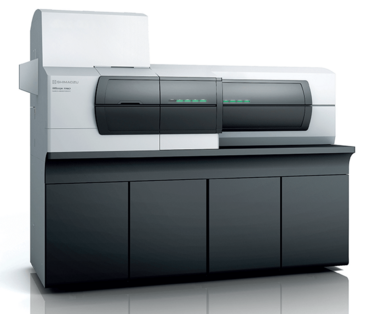
2. RISE Microscopy
Novel correlative microscopy technique, combining confocal Raman Imaging and Scanning Electron (RISE) Microscopy within one integrated system
Produced by: WITec (www.witec.de)
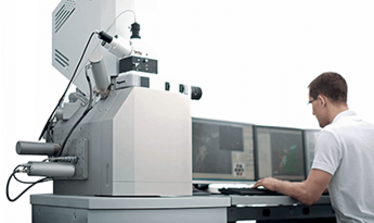
Potential impact: Correlative Raman and SEM imaging accelerates the research workflow significantly as it reduces the time-consuming sample transfer between different systems. The correlative nature can provide new answers and findings for challenging material characterization problems in pharmaceutical, geo, nano-carbon or semiconductor research to name just a few of the potential fields of application.
Detail: The unique combination provides clear advantages for the microscope user with regard to comprehensive sample characterization: electron microscopy is an excellent technique for visualizing the sample surface structures in the nanometer range; confocal Raman imaging is an established spectroscopic method used for the detection of the chemical and molecular components of a sample. It can also generate 2D- and 3D-images and depth profiles to visualize the distribution of the molecular compounds within a sample. The RISE Microscope enables the acquisition of SEM and Raman images from the same sample area and the correlation of ultra-structural and chemical information with one microscope system.
The judges say: “Allows molecules to be studied in their ‘context’”.
“A high-tech tool for materials research.”
3. ionKey/MS System
Robust, plug-and-play LC-MS platform employing microfluidics to get exceptional sensitivity out of mass spectrometry
Produced by: Waters (www.waters.com)
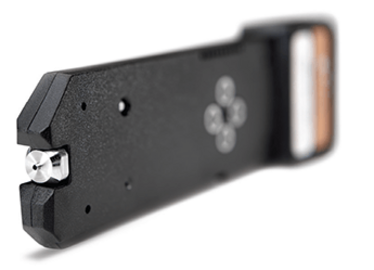
Potential impact: Compared to 2.1 mm chromatography, the ionKey/MS System has been shown to improve chromatographic sensitivity by up to 40 times on sample volumes in the 1- 25 µl range. Simply put, analysts can use gains in sensitivity to uncover information about the smallest concentrations of sample analytes on ever-smaller sample volumes, particularly important when working with pediatric samples or with laboratory mice. Savings come in the form of solvent reduction (90% over 2.1 mm chromatography), fewer laboratory animals sacrificed, and a reduced number of reanalyses.
We expect the ionKey/MS System to have a large impact on reducing time to market for life saving therapeutics and accelerating decision making.
Detail: The ionKey/MS System gives every analytical scientist, experienced or not, ready access to an extremely sensitive system by completely removing the complexity associated with using chromatography at this scale. Its performance in terms of robustness and reproducibility equals that of UPLC/UHPLC on 2.1 mm ID columns. Scientists praise the plug and play nature of the ionKey/MS System. They no longer have to contend with delicate fittings and brittle, fused silica capillary columns or concern themselves with extra column dispersion and the inevitable variability and band broadening that comes with it.
The iKey is about the size of a smart phone and contains the separation channel packed with sub 2 µm particles, electronics, ESI interface, heater and eCord Intelligent Chip Technology. It is designed to perform a thousand or more UPLC-quality separations, reproducibly and reliably without a degradation in performance.
The judges say: “Micro LC for the masses.”
“Making instruments smaller and allowing micro analysis using a ‘modular approach’ is a philosophy that deserves appreciation.”
4. Select-eV
Variable-energy ion-source technology for GC-MS
Produced by: Markes International (www.markes.com)
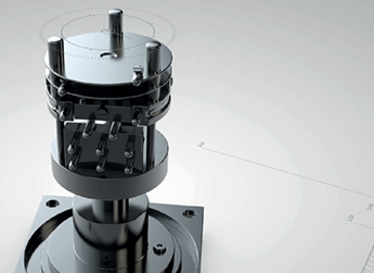
Potential impact: Select-eV allows both standard (70 eV) and soft ionization, so alternative soft ionization techniques, with their associated inconveniences of source exchange and use of reagent gases, can be completely avoided. In addition, at lower energies with Select-eV, the molecular ion is enhanced but structurally significant fragments are maintained. These factors make Select-eV a convenient tool for confirming compound identity, or distinguishing between compounds with spectra that are very similar at 70 eV. The overall impact of these advances is increased ease of use, reduced down-time and enhanced flexibility, at the same time as greater confidence in analyte identification.
Detail: Select-eV breaks new ground by allowing electron ionization (EI) energies to be reduced on a sliding scale from 70 eV to 10 eV, without impacting sensitivity, simply by changing a parameter in the software method. This allows the production of reference-quality EI mass spectra with conventional full-fragmentation patterns, and repeatable ‘soft-ionization’ spectra exhibiting reduced fragmentation and an enhanced molecular ion. This is significant because previous attempts to develop soft EI have suffered from dramatic sensitivity losses, making them all but unusable. In contrast, the innovative design of the Select-eV ion source allows sensitivity to be maintained or even enhanced.
The judges say: “Significantly improves lab efficiency by removing the obstacle of having to switch between EI and CI.”
5. VGA-100 Gas Chromatography Detector
Short wavelength spectroscopic gas chromatography detector
Produced by: VUV Analytics (www.vuvanalytics.com)
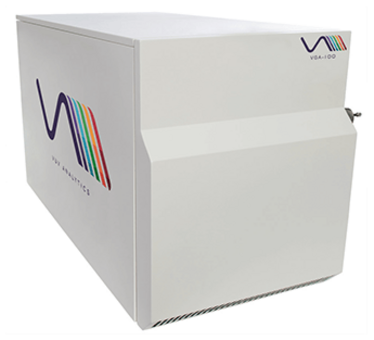
Potential impact: The VGA-100 is a universal mass sensitive detector that provides excellent sensitivity and selectivity of gas phase molecules. It extends the Beer-Lambert Law into gas phase analysis, providing a very easy-to-use and easy-to-understand technique for the detection and identification of gas phase molecules. The unique molecular absorption cross sections allow for unambiguous identification of compounds, including the discrimination of most isomers. These unique absorption responses and well understood principles simplify the deconvolution of co-eluting analytes and provide a first principle technique that can greatly decrease the need for instrument calibrations.
Detail: The VGA-100 is the first new gas chromatography detector technology in approximately 30 years. The instrument is the first commercial instrument to make the vacuum ultraviolet (VUV) regime (120nm to 240nm) available to the general scientific community. The technology extends the very well understood principles of absorption spectroscopy into a region never before utilized. Prior gas phase studies at this energy range have been restricted to synchrotron facilities because of environmental hurdles of working in the VUV. Everything absorbs in the VUV, thus extremely bright sources have been required to overcome these interference difficulties. The instrument provides rapid acquisitions, up to 100Hz, of this full spectral range, which results in unique gas phase absorption spectra that are hundreds of times stronger than in the IR and enable excellent qualitative and quantitative analysis.
The judges say: “Nicely complements mass spectrometry where it is weakest: in the identification of isomeric structures.”
6. BARDS (Broadband Acoustic Resonance Dissolution Spectroscopy)
Universal comparator to differentiate powders, polymorphs, blends and more
Produced by: BARDS Research Centre, University College Cork (www.bards.ie)
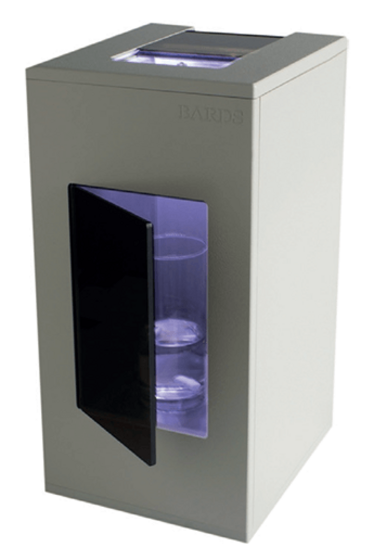
Potential impact: BARDS is a new platform technology with broad applications in food and pharma, from R&D to at-line monitoring. It is fast, small, economic and simple to operate. The BARDS team received a Pfizer Award for ‘Innovation through teamwork’. The new spectrometer should create a paradigm shift in powder analysis
Detail: We’ve developed a new acoustic based spectrometer, which detects changes in the compressibility of solvents during the dissolution of analytes. These changes in compressibility are highly reproducible under standardized conditions. This shows there are highly ordered processes occurring during dissolution, which were previously regarded as random and chaotic. The dissolution vessel is induced to resonate using a magnetic stir bar. These resonances change and result in signature time/frequency profiles for a particular analyte. The phenomenon is due to entrained gases in the powder/tablet along with a reduction in the solubility of gases already in solution leading to outgassing in solution.
The judges say: “Novel approach, providing relevant information to a large market.”
7. Nexera-e
Analysis and identification of unknown compounds in complex matrices by exponential increase of peak resolution and peak capacity
Produced by: Shimadzu (www.shimadzu.com)
Potential impact: The Nexera-e comprehensive 2D-LC system achieves high peak capacity by fractionating the first-dimensional eluent and successively injecting the fractions online to the second-dimensional separation system with the dual-loop alternate switching design. This is beneficial in a wide range of research fields, for example, the analysis of pharmaceutical impurities, the analysis of proteolytic digests, food and natural extracts, petroleum components, latex and polymer additives, and residual pesticides.
Detail: The “e” means exponential chromatography, exponential increase of peak resolution and peak capacity using the comprehensive LC×LC technology. By combining two orthogonal separation modes (for example, normal phase and reversed phase), the system can separate complex mixtures, such as structural analogues in food and natural extracts, in one analysis. With a conventional 1D-LC system, separations of mixtures containing a vast amount of substances of different chemical classes, such as polyphenols, carotenoids, flavonoids and lipids, are almost impossible to achieve. One injection and sample preparation instead of multiple approaches underline the system’s efficiency.
The judges say: “Allows spatially resolved analysis using two complementary high resolution techniques. It is no longer just about what is in a sample, but also about where the molecules are, what are their neighbours, etc.”
8. µDAWN
First light scattering detector for UHPLC
Produced by: Wyatt Technology (www.wyatt.com)
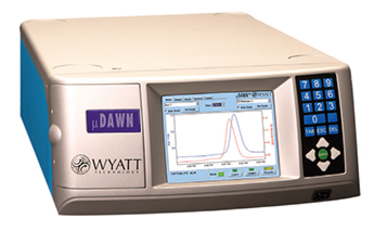
Potential impact: The transition from standard high performance liquid chromatography/gel permeation chromatography (HPLC/GPC) analysis of macromolecules to UHPLC is in full swing, providing reduced solvent consumption, faster separations and improved resolution, all culminating in a vast improvement to productivity and performance for LC applications. Prior to the advent of the µDAWN, users of UHPLC size exclusion chromatography could not enjoy the benefits of absolute molar mass determination in solution.
Consequently, many important applications were forced to continue using standard HPLC/GPC and did not enjoy the productivity and performance increases. Scientists pursuing those applications may now gain those advantages by implementing micro size-exclusion chromatography-multi-angle static light scattering (µSEC-MALS).
Detail: The µDAWN is the first multi‐angle light scattering (MALS) detector that can be coupled with any UHPLC system to determine the molecular weights and sizes of synthetic and natural polymers, peptides, proteins or other biomacromolecules entirely in solution, directly without resorting to SEC/GPC column calibration or reference standards.
In combination with a UHPLC refractive index (RI) detector, the µDAWN delivers all the advantages of standard SEC-MALS analysis including identification of fragments and aggregates, polymer conformation, and – in conjunction with a UHPLC UV detector – molecular weights for PEGylated proteins, surfactant-bound membrane proteins, co-polymers and similar conjugated molecules.
By reducing the conventional light scattering flow cell volume from 63µl to lower than 10µl, a µDAWN/UT-rEX system can accurately analyze the molar mass and size of UHPLC peaks without loss of resolution.
The judges say: “Going to smaller flow cells for MALS is just what was needed to further polymer characterization.”
9. OneOmics Project
Integration of proteomics and genomics data in BaseSpace, a cloud-computing omics environment
Produced by: AB SCIEX (www.absciex.com) and Illumina (www.illumina.com)

Potential impact: The collaboration between AB SCIEX and Illumina addresses a bottleneck in biomedical research by helping to securely store, retrieve, and manage large-scale complex data sets, and visualize them in a biological context. The new tools allow researchers to make predictable, actionable, and testable models of disease more quickly and efficiently, which will aid research into diseases such as cancer, diabetes, Alzheimer’s, and heart disease. It will also allow these large data sets to be shared globally, making informatics accessible to anyone searching for a truly interdisciplinary systems level understanding of biology.
Detail: SWATH Proteomics technology solves the ‘missing data problem’ that has plagued proteomics in recent years, and makes the reproducible quantitation of thousands of proteins in hundreds of samples possible for the first time. With this capability, it is now simpler to integrate proteomics with next-generation sequencing (NGS) genomics and transcriptomics. To enable this, the SWATH Proteomics Toolkit suite of apps is now available in BaseSpace apps, Illumina’s applications store and cloud-based informatics community where genomics data can be routinely stored, processed and shared. SWATH Proteomics data can be processed 25 times faster, making the integration of genomics and proteomics analysis more accessible to the wider community, and allowing new bioinformatics algorithms to be adopted more readily, accelerating multi-omics research. The SWATH Proteomics Toolkit includes the Protein Expression Extractor, Assembler, Browser and Analytics apps for processing of raw mass spectrometry data, protein fold-change analysis, and data quality review. These apps make it easier for scientists to extract biological insight from their data.
The judges say: “Good to see acknowledgement of the need to take this data-combination approach beyond the academic level.”
10. Progeny Analyzer
Handheld analyzer for raw material identification and chemical detection
Produced by: Rigaku Raman Technologies (www.rigakuraman.com)
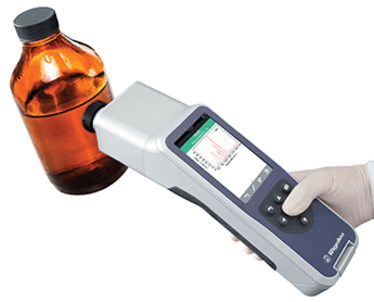
Potential impact: For pharmaceutical manufacturers, Progeny validates the quality of their incoming raw materials and final products, therefore ensuring that standards and specifications related to product safety and efficacy are met. In addition, Progeny provides emergency response teams with the power to immediately identify suspicious materials and quickly determine threat severity to provide the most appropriate response.
Detail: As the first fully sealed 1064nm handheld Raman analyzer, Progeny’s ergonomic design and sleek shape allows for easy, single-hand use. Its intuitive, smartphone-inspired software can be used for simple development of new applications, shortening the learning curve. For error-free data entry tracking, Progeny provides 21 CFR Part 11 compliant digital signature capabilities and an integrated camera for sample documentation and barcode readings. Its aluminum housing has an IP-68 protection rating and has been MIL-STD-810G tested, minimizing cross-contamination and ensuring durability. Progeny’s use of a 1064nm high-power excitation laser minimizes common fluorescence interferences, and in turn broadens the range of materials that can be measured, such as colored substances, or through thick, colored packaging. In addition, Progeny offers an industry exclusive wavelets-based search algorithm, which speeds up the library search process and ensures confidence in sample identification.
The judges say: “Brings the lab to the sample and increases usability with innovative features.”
11. 1290 Infinity II Multiple Heart-Cutting 2D-LC Solution
Fully automated 2D-LC system with ability to run long 2D gradients of heart-cuts
Produced by: Agilent Technologies (www.agilent.com)
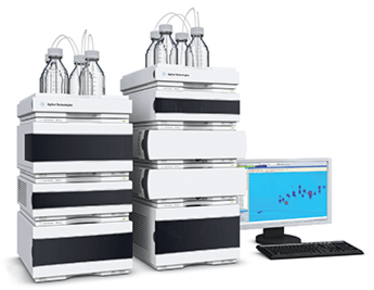
Potential impact: Analytical scientists often question whether they have achieved the full separation of their samples, even if chromatographic peaks look pure. While Heart-Cutting 2D-LC helps to answer this question for one or two peaks, comprehensive 2D-LC gives an overview of the whole chromatogram but has very short 2D gradients. Multiple heart-cutting 2D-LC allows higher resolution for several heart-cuts.
Detail: The 1290 Infinity Multiple Heart-Cutting 2D-LC Solution enables users to run longer gradients in the second dimension to increase performance without the risk of losing a peak from the first dimension. Newly designed ready-to-go valves, easy-to-use software, and new data analysis functions make 2D-LC easier than before. The Multiple Heart-Cut Valves all have sample loops installed and can be tested for an installation in 10 seconds. A straightforward 2D-LC method setup easily guides users through all important method parameters and a reference chromatogram allows the user to preview the areas of heart-cuts for the second dimension. Furthermore, the new Heart-Cut Viewer enables fast and easy analysis of multiple heart-cutting 2D-LC data. Changing between 1D-LC and 2D-LC modes can be performed without manual interaction.
The judges say: “Good to see that relatively complex/challenging analytical flow technology can be automated in a robust way.”
12. Delta Ray Isotope Ratio Infrared Spectrometer (IRIS)
Solution for the continuous measurement of isotope ratio and concentration of CO2
Produced by: Thermo Fisher Scientific (www.thermoscientific.com)

Potential impact: Delta Ray can give climate scientists a deeper understanding of climate change events. It is able to give continuous data at the site of interest, which is dramatically reducing the workload of scientists and also significantly increasing the quality and accuracy of their results.
Detail: Delta Ray is a small box that is able to accurately track changes in concentration and source of CO2 plumes. It is having a large impact on the fields of fracking, volcano eruption prediction, greenhouse gas monitoring and carbon storage and sequestration.
The judges say: “Although movable (but not yet portable) it takes the lab to the sample. Further steps in sensitivity and miniaturization will unlock this technology for a much wider application area.”
13. EZGC Online Method Development Tool Suite
Model chromatograms, get column recommendations, translate methods, and calculate flows for free online
Produced by: Restek (www.restek.com)
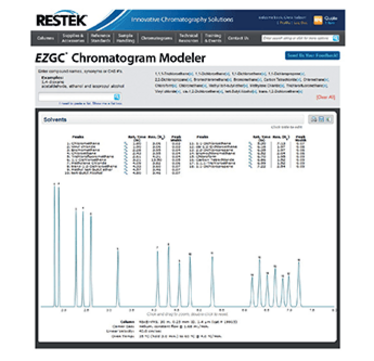
Potential impact: Potential impact: Whether you are developing a new GC method or looking to reliably optimize an application, the EZGC method development tool suite will save you hours of calculations, guesswork, and trial-and-error – without injecting a single sample or even installing a column.
On a PC or Mac, desktop or tablet, EZGC method development tools make it easy to make the most of our chromatographic expertise and tailor a perfect solution for your method development challenges.
Detail: The EZGC chromatogram modeler helps you develop GC methods from scratch, including the column and conditions. Simply enter your analyte list to generate a customized, interactive model chromatogram that provides a specific phase, column dimension, and conditions. Zoom in, view chemical structures, and even overlay mass spectra of co-eluting compounds.
The EZGC method translator and flow calculator makes it simple to switch carrier gases, change column dimensions or detectors, or optimize a method for speed or efficiency. Just enter your current method specifications and you will receive a full set of calculated method conditions that will provide similar chromatography. Results include oven program and run time as well as average velocity, flow rate, splitless valve time, and other control parameters – all in an easy-to-use, single-screen interface with seamless transfer between tools.
These free, web-based applications are easily accessible online and Windows users can also download the EZGC method translator and flow calculator for offline use.
The judges say: “This tool can greatly reduce the time to (first) results, allowing labs to answer urgent questions faster.”
14. Vanquish UHPLC
Instrument and columns uniquely designed together to maximize the performance advantages of higher pressures
Produced by: Thermo Fisher Scientific (www.thermoscientific.com)
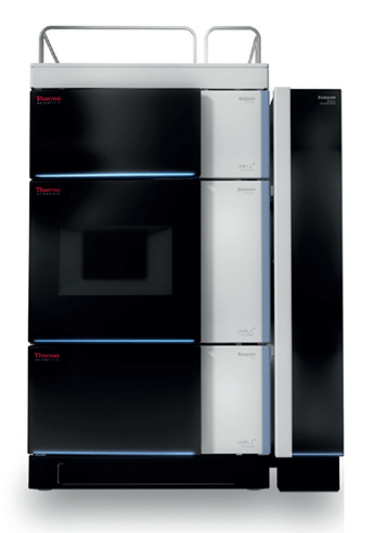
Potential impact: Isn’t UHPLC a mature category where improvements are incremental? Actually, it has been evolutionary; when one manufacturer increases the pressure/flow envelope, another company raises it a little higher – and the columns have to evolve to survive the higher pressures. We decided to make a big bet by designing a new platform and columns at the same time, to fully exploit the performance advantages of the industry’s highest pressure rating. Scientists have been asking for more performance and throughput with more complex samples, and the rationale was that this new UHPLC platform could have a major impact across a broad segment of the scientific community.
Detail: The Thermo Scientific Vanquish UHPLC was designed from the ground up to provide new levels of performance, productivity and usability. It was designed around our new Accucore Vanquish UHPLC columns, featuring 1.5 µm solid core particles to help customers take full advantage of the system’s 1500 bar (22,000 psi) maximum pressure and flow rate up to 5ml/min. Ultra-short diffusion path lengths contribute to highly-efficient separations. It features both direct column heating and forced air heating, further enhancing separation efficiency, selectivity and retention time reproducibility. Vanquish UHPLC also combines the ruggedness of an integrated system with the flexibility and serviceability of a modular system.
The judges say: “Good to redesign from time to time. Degree of automation in line with very wide applicability, but some versatility also implemented.”
15. A-Line Quick Connect Fitting
HPLC finger-tight and reusable fitting stable to 1300 bar
Produced by: Agilent Technologies
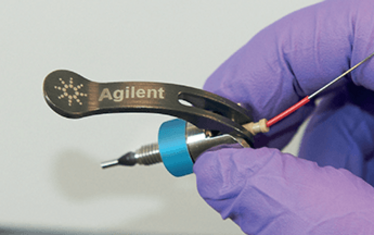
Potential impact: Poor LC connections are a common problem for customers, as traditional fittings require some skill and experience to make successfully. This easy-to-use fitting ensures that every user, regardless of skill level, can get a leak-free connection, so there is less troubleshooting and rework. Moreover, the fact that the connection can be repeatedly remade means that columns are easy to change, further increasing flexibility and productivity in the lab.
Detail: Our new fitting is the product of an Agilent R&D initiative to leverage its insights into how liquid chromatography works to address key challenges in the chromatographic workflow, ensuring that customers continually get maximum productivity from their LC systems. These are the only true finger-tight UHPLC fittings that are stable to 1300 bar and they can be used over and over again without loss of performance. The innovative spring-loaded design pushes the capillary tubing against the receiving port for zero dead volume connections with all types of HPLC and UHPLC columns. The rugged design ensures its durability.
The judges say: “Handy!”

Rich Whitworth completed his studies in medical biochemistry at the University of Leicester, UK, in 1998. To cut a long story short, he escaped to Tokyo to spend five years working for the largest English language publisher in Japan. "Carving out a career in the megalopolis that is Tokyo changed my outlook forever. When seeing life through such a kaleidoscopic lens, it's hard not to get truly caught up in the moment." On returning to the UK, after a few false starts with grey, corporate publishers, Rich was snapped up by Texere Publishing, where he spearheaded the editorial development of The Analytical Scientist. "I feel honored to be part of the close-knit team that forged The Analytical Scientist – we've created a very fresh and forward-thinking publication." Rich is now also Content Director of Texere Publishing, the company behind The Analytical Scientist.

